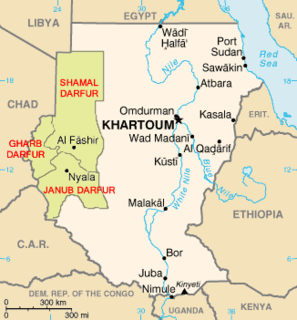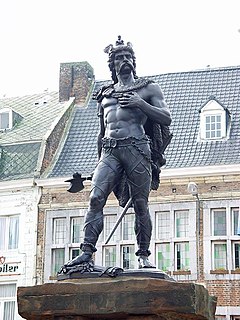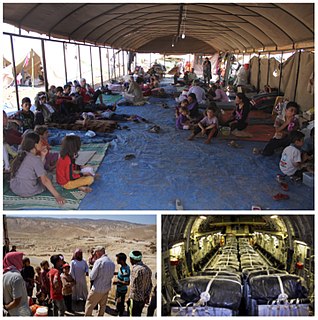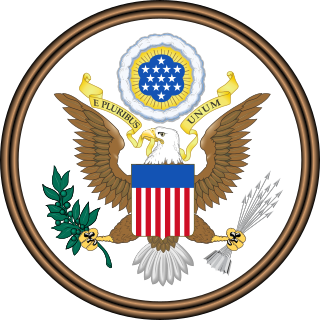 W
WGenocide is the deliberate and systematic destruction, in whole or in part, of an ethnic, racial, religious or national group. The term was coined in 1944 by Raphael Lemkin. It is defined in Article 2 of the Convention on the Prevention and Punishment of the Crime of Genocide (CPPCG) of 1948 as "any of the following acts committed with intent to destroy, in whole or in part, a national, ethnical, racial or religious group, as such: killing members of the group; causing serious bodily or mental harm to members of the group; deliberately inflicting on the groups conditions of life, calculated to bring about its physical destruction in whole or in part; imposing measures intended to prevent births within the group; [and] forcibly transferring children of the group to another group."
 W
WThe 1888–1893 Uprisings of Hazaras occurred when the Afghans and the British in the aftermath of the Second Anglo-Afghan War, signed the Treaty of Gandamak. Afghan King Abdur Rahman Khan set out to bring the Turkistan, Hazarajat and Kafiristan regions under his control. He launched several campaigns in the Hazarajat due to resistance from the Hazaras, and he conducted a genocide which included killing and raping of Hazaras. Sixty percent of the total Hazara population was killed or displaced with thousands fleeing to Quetta and other adjoining areas. The Hazara land was distributed among Pashtun villagers. Hazara women and old men were sold as slaves, and many young Hazara girls were kept as concubines by Afghan kings. Abdur Rahman arrested Syed Jafar, chief of the Sheikh Ali Hazara tribe, and jailed him in Mazar-e-Sharif. The repression after the uprising has been called the most significant case of genocide in the history of modern Afghanistan.
 W
WThe 1947–1948 Rajouri Massacres were the targeted killing of thousands of Hindu and Sikh residents and refugees in the Rajouri tehsil in the princely state of Jammu and Kashmir, by the Azad Kashmir Forces and Pashtun tribal militia during the First Kashmir War. The 'siege' of the town of Rajouri began on 7 November 1947 and ended on the 12 April 1948 when the Indian Army recaptured it. The massacre is commemorated annually in Rajouri and the Union Territory of Jammu and Kashmir.
 W
WThe Albigensian Crusade or the Cathar Crusade was a 20-year military campaign initiated by Pope Innocent III to eliminate Catharism in Languedoc, in southern France. The Crusade was prosecuted primarily by the French crown and promptly took on a political flavour, resulting in not only a significant reduction in the number of practising Cathars, but also a realignment of the County of Toulouse in Languedoc, bringing it into the sphere of the French crown, and diminishing both Languedoc's distinct regional culture and the influence of the counts of Barcelona.
 W
WThe Anfal genocide was a genocide that killed between 50,000 and 182,000 Kurds as well as several thousand Assyrians. It was committed during the Al-Anfal campaign led by Ali Hassan al-Majid, on the orders of President Saddam Hussein, against Iraqi Kurdistan in northern Iraq during the final stages of the Iran–Iraq War.
 W
WAntiziganism is hostility, prejudice, discrimination or racism which is specifically directed at Romani people. Non-Romani itinerant groups in Europe such as the Yenish and Irish and Scottish Travellers are often given the misnomer "gypsy" and confused with the Romani people. As a result, sentiments which were originally directed at the Romani people are also directed at other traveler groups and they are often referred to as "antigypsy" sentiments.
 W
WThe Armenian Genocide was the systematic mass murder and expulsion of 1.5 million ethnic Armenians carried out in Turkey and adjoining regions by the Ottoman government between 1914 and 1923. The starting date is conventionally held to be 24 April 1915, the day that Ottoman authorities rounded up, arrested, and deported from Constantinople to the region of Angora (Ankara), 235 to 270 Armenian intellectuals and community leaders, the majority of whom were eventually murdered.
 W
WThe genocide in Bangladesh began on 26 March 1971 with the launch of Operation Searchlight, as West Pakistan began a military crackdown on the Eastern wing of the nation to suppress Bengali calls for self-determination. During the nine-month-long Bangladesh War for Liberation, members of the Pakistani military and supporting Islamist militias from Jamaat-e-Islami killed between 300,000 and 3,000,000 people and raped between 200,000 and 400,000 Bengali women, according to Bangladeshi and Indian sources, in a systematic campaign of genocidal rape. The actions against women were supported by Jamaat-e-Islami religious leaders, who declared that Bengali women were gonimoter maal. As a result of the conflict, a further eight to ten million people, mostly Hindus, fled the country to seek refuge in neighbouring India. It is estimated that up to 30 million civilians were internally displaced out of 70 million. During the war, there was also ethnic violence between Bengalis and Urdu-speaking Biharis. Biharis faced reprisals from Bengali mobs and militias and from 1,000 to 150,000 were killed. Other sources claim it was up to 500,000.
 W
WThe Battle of Corinth was a battle fought between the Roman Republic and the Greek city-state of Corinth and its allies in the Achaean League in 146 BC, which resulted in the complete and total destruction of Corinth. This battle marked the end of the Achaean War and the beginning of the period of Roman domination in Greek history.
 W
WThe Black War was the period of violent conflict between British colonists and Aboriginal Australians in Tasmania from the mid-1820s to 1832. The conflict, fought largely as a guerrilla war by both sides, claimed the lives of more than 200 European colonists and between 600 and 900 Aboriginal people, nearly annihilating the island's indigenous population. The near-destruction of the Aboriginal Tasmanians, and the frequent incidence of mass killings, has sparked debate among historians over whether the Black War should be defined as an act of genocide.
 W
WThe Bosnian genocide refers to either the Srebrenica massacre or the wider crimes against humanity and ethnic cleansing throughout areas controlled by the Army of Republika Srpska (VRS) during the Bosnian War of 1992–1995. The events in Srebrenica in 1995 included the killing of more than 8,000 Bosniak men and boys, as well as the mass expulsion of another 25,000–30,000 Bosniak civilians by VRS units under the command of General Ratko Mladić.
 W
WThe Cambodian genocide was the systematic persecution and killing of Cambodians by the Khmer Rouge under the leadership of Pol Pot, who radically pushed Cambodia towards communism. It resulted in the deaths of 1.5 to 2 million people from 1975 to 1979, nearly a quarter of Cambodia's 1975 population.
 W
WThe Circassian genocide was the Russian Empire's systematic mass murder, ethnic cleansing, forced migration, and expulsion of 800,000-1,500,000 Circassians from their homeland Circassia, which roughly encompassed the major part of the North Caucasus and the northeast shore of the Black Sea. This occurred in the aftermath of the Caucasian War in the second half of the 19th century. The displaced people moved primarily to the Ottoman Empire. It has been recorded that during the events, the Russian and Cossack forces used various brutal methods to entertain themselves, such as tearing the bellies of pregnant women and removing the baby inside, feeding the babies to dogs. Russian generals such as Grigory Zass described the Circassians as "subhuman filth", and justified their killing and use in scientific experiments.
 W
WThe Darfur genocide is the systematic killing of Darfuri men, women, and children which has occurred during the ongoing conflict in Western Sudan. It has become known as the first genocide of the 21st century. The genocide, which is being carried out against the Fur, Masalit and Zaghawa tribes, has led the International Criminal Court (ICC) to indict several people for crimes against humanity, rape, forced transfer and torture. According to Eric Reeves, more than one million children have been "killed, raped, wounded, displaced, traumatized, or endured the loss of parents and families".
 W
WThe War in Darfur, also nicknamed the Land Cruiser War, is a major armed conflict in the Darfur region of Sudan that began in February 2003 when the Sudan Liberation Movement (SLM) and the Justice and Equality Movement (JEM) rebel groups began fighting the government of Sudan, which they accused of oppressing Darfur's non-Arab population. The government responded to attacks by carrying out a campaign of ethnic cleansing against Darfur's non-Arabs. This resulted in the death of hundreds of thousands of civilians and the indictment of Sudan's president, Omar al-Bashir, for genocide, war crimes, and crimes against humanity by the International Criminal Court.
 W
WThe Deportation of the Chechens and Ingush, also known as Aardakh, Operation Lentil ; Ingush and Chechen: Вайнах махкахбахар Vaynah Mahkahbahar) was the Soviet forced transfer of the whole of the Vainakh populations of the North Caucasus to Central Asia on February 23, 1944, during World War II. The expulsion was ordered by NKVD chief Lavrentiy Beria after approval by Soviet Premier Joseph Stalin, as a part of a Soviet forced settlement program and population transfer that affected several million members of non-Russian Soviet ethnic minorities between the 1930s and the 1950s.
 W
WThe deportation of the Crimean Tatars or the Sürgünlik ("exile") was the ethnic cleansing of at least 191,044 Crimean Tatars in 18–20 May 1944 carried out by the Stalinist regime, specifically by Lavrentiy Beria, head of the Soviet state security and secret police, acting on behalf of Joseph Stalin. Within three days, Beria's NKVD used cattle trains to deport mostly women, children, the elderly, even Communists and members of the Red Army, to the Soviet Republic of Uzbekistan, several thousand kilometres away. They were one of the ten ethnicities who were encompassed by Stalin's policy of population transfer in the Soviet Union.
 W
WThe Dzungar genocide was the mass extermination of the Mongol Dzungar people, at the hands of the Qing dynasty. The Qianlong Emperor ordered the genocide due to the rebellion in 1755 by Dzungar leader Amursana against Qing rule, after the dynasty first conquered the Dzungar Khanate with Amursana's support. The genocide was perpetrated by Manchu generals of the Qing army sent to crush the Dzungars, supported by Uyghur allies and vassals due to the Uyghur revolt against Dzungar rule.
 W
WThe East Timor genocide refers to the "pacification campaigns" of state terrorism which were waged by the Indonesian New Order government during the Indonesian invasion and occupation of East Timor. Although some sources consider the Indonesian killings in East Timor to constitute genocide, other scholars disagree.
 W
WThe Eburones, were a Gallic-Germanic tribe, dwelling in the northeast of Gaul, in what is now the southern Netherlands, eastern Belgium, and the German Rhineland, in the period immediately preceding the Roman conquest of the region. Though living in Gaul, they were also described as being both Belgae and Germani.
 W
WEffacer le tableau was the operational name given to the systematic extermination of the Bambuti pygmies by rebel forces in the Democratic Republic of the Congo (DRC).
 W
WThe Generalplan Ost, abbreviated GPO, was the Nazi German government's plan for the genocide and ethnic cleansing on a vast scale, and colonization of Central and Eastern Europe by Germans. It was to be undertaken in territories occupied by Germany during World War II. The plan was attempted during the war, resulting indirectly and directly in millions of deaths of ethnic Slavs by shootings, starvation, disease, or extermination through labor. But its full implementation was not considered practicable during the major military operations, and was prevented by Germany's defeat.
 W
WThe Genocide of the Serbs was the systematic persecution of Serbs which was committed during World War II by the fascist Ustaše regime in the Nazi German puppet state known as the Independent State of Croatia between 1941 and 1945. It was carried out through executions in death camps, as well as through mass murder, ethnic cleansing, deportations, forced conversions, and war rape. This genocide was simultaneously carried out with the Holocaust in the NDH as well as the genocide of Roma, by combining Nazi racial policies with the ultimate goal of creating an ethnically pure Greater Croatia.
 W
WThe Islamic State of Iraq and the Levant (ISIL) is recognized by the United Nations as the perpetrator of a genocide of Yazidis in Sinjar, Iraq. The genocide led to the expulsion, flight and effective exile of the Yazidis from their ancestral lands in Iraqi Kurdistan. Thousands of Yazidi women and girls were forced into sexual slavery by the Islamic State, and thousands of Yazidi men were killed. Five thousand Yazidi civilians were killed during what has been called a "forced conversion campaign" being carried out by ISIL in Northern Iraq. The genocide began following the withdrawal of the Kurdistan Regional Government's Peshmerga militia, which left the Yazidis defenseless.
 W
WThe Greek genocide, including the Pontic genocide, was the systematic killing of the Christian Ottoman Greek population carried out in Anatolia during World War I and its aftermath (1914–1922) on the basis of their religion and ethnicity. It was instigated by the government of the Ottoman Empire and the Turkish national movement against the indigenous Greek population of the Empire and included massacres, forced deportations involving death marches, summary expulsions, arbitrary execution, and the destruction of Eastern Orthodox cultural, historical, and religious monuments. According to various sources, several hundred thousand Ottoman Greeks died during this period. Most of the refugees and survivors fled to Greece. Some, especially those in Eastern provinces, took refuge in the neighbouring Russian Empire.
 W
WThe Guatemalan genocide, Maya(n) genocide, or Silent Holocaust was the massacre of Maya civilians during the Guatemalan military government's counterinsurgency operations. Massacres, forced disappearances, torture and summary executions of guerrillas and especially civilian collaborators at the hands of US-backed security forces had been widespread since 1965 and was a longstanding policy of the military regime, which US officials were aware of. A report from 1984 discussed "the murder of thousands by a military government that maintains its authority by terror". Human Rights Watch has described "extraordinarily cruel" actions by the armed forces, mostly against unarmed civilians.
 W
WThe Herero and Nama genocide was the first genocide of the 20th century, waged by the German Empire against the Ovaherero, the Nama, and the San in German South West Africa. It occurred between 1904 and 1908.
 W
WThe Holocaust, also known as the Shoah, was the World War II genocide of the European Jews. Between 1941 and 1945, across German-occupied Europe, Nazi Germany and its collaborators systematically murdered some six million Jews, around two-thirds of Europe's Jewish population. The murders were carried out in pogroms and mass shootings; by a policy of extermination through work in concentration camps; and in gas chambers and gas vans in German extermination camps, chiefly Auschwitz, Bełżec, Chełmno, Majdanek, Sobibór, and Treblinka in occupied Poland.
 W
WThe Holodomor, also known as the Famine-Genocide in Ukraine, the Terror-Famine and sometimes referred to as the Great Famine or the Ukrainian Genocide of 1932–33, was a famine in Soviet Ukraine from 1932 to 1933 that killed millions of Ukrainians. The term Holodomor emphasises the famine's man-made and intentional aspects such as rejection of outside aid, confiscation of all household foodstuffs and restriction of population movement. As part of the wider Soviet famine of 1932–33 which affected the major grain-producing areas of the country, millions of inhabitants of Ukraine, the majority of whom were ethnic Ukrainians, died of starvation in a peacetime catastrophe unprecedented in the history of Ukraine. Since 2006, the Holodomor has been recognized by Ukraine and 15 other countries as a genocide of the Ukrainian people carried out by the Soviet government.
 W
WThe Ikiza or the Ubwicanyi (Killings) was a genocide which was committed in Burundi in 1972 by the Tutsi-dominated army and government against the Hutus who lived in the country. Conservative estimates place the death toll of the genocide between 100,000 and 150,000 killed, while some estimates of the genocide's death toll go as high as 300,000.
 W
WThe Indian Removal Act was signed into law on May 28, 1830, by United States President Andrew Jackson. The law authorized the president to negotiate with southern Native American tribes for their removal to federal territory west of the Mississippi River in exchange for white settlement of their ancestral lands. The act has been referred to as a unitary act of systematic genocide, because it discriminated against an ethnic group in so far as to make certain the death of vast numbers of its population. The Act was signed by Andrew Jackson and it was strongly enforced under his administration and that of Martin Van Buren, which extended until 1841.
 W
WThe Isaaq genocide or Hargeisa Holocaust was the systematic, state-sponsored massacre of Isaaq civilians between 1987 and 1989 by the Somali Democratic Republic under the dictatorship of Siad Barre. The number of civilian deaths in this massacre is estimated to be between 50,000-100,000 according to various sources, whilst local reports estimate the total civilian deaths to be upwards of 200,000 Isaaq civilians. This genocide also included the levelling and complete destruction of the second and third largest cities in Somalia, Hargeisa and Burao respectively, and had caused up to 500,000 Somalis to flee their land and cross the border to Hartasheikh in Ethiopia as refugees, in what was described as "one of the fastest and largest forced movements of people recorded in Africa", and resulted in the creation of the world's largest refugee camp then (1988), with another 400,000 being displaced. The scale of destruction led to Hargeisa being known as the 'Dresden of Africa'. The killings happened during the Somali Civil War and have been referred to as a "forgotten genocide".
 W
WThe Kazakh exodus from Xinjiang occurred in waves during the 1950s and 1960s after the victory of the Communist Party of China in Xinjiang.
 W
WThe Kazakh famine of 1930–1933, named in Kazakhstan as the Goloshchyokin genocide after Filipp Goloshchyokin to emphasize its man-made nature and also known as the Kazakh catastrophe, was a famine where 1.5 million people died in Soviet Kazakhstan, of whom 1.3 million were ethnic Kazakhs; 38% of all Kazakhs died, the highest percentage of any ethnic group killed in the Soviet famine of 1932–33. Some historians assume that 42% of the entire Kazakh population died in the famine.
 W
WMassacres of Hutus during the First Congo War refers to the mass killing of Rwandan, Congolese and Burundian Hutu men, women and children in villages and refugee camps then hunted down while fleeing across the territory of Democratic Republic of Congo from October 1996 to May 1997.
 W
WOperation Searchlight was a planned military operation carried out by the Pakistan Army to curb the Bengali nationalist movement in the erstwhile East Pakistan in March 1971, which the Pakistani state retrospectively justified on the basis of anti-Bihari violence by Bengalis in early March. Ordered by the central government in West Pakistan, the original plan envisioned taking control of all of East Pakistan's major cities on 26 March, and then eliminating all Bengali opposition, political or military, within one month. Pakistani President Yahya Khan at a conference in February 1971 said "Kill three million of them and the rest will eat out of our hands." Prolonged Bengali resistance was not anticipated by the Pakistani military leaders. The main phase of Operation Searchlight ended with the fall of the last major Bengali-held town in mid-May. The operation also precipitated the 1971 Bangladesh genocide, in which 300,000-3,000,000 civilians were killed and roughly 10 million refugees fled to India. Bengali intelligentsia, academics and Hindus were targeted for the harshest treatment, with significant indiscriminate killing taking place. These systematic killings enraged the Bengalis, who declared independence from Pakistan, to establish the new nation of Bangladesh.
 W
WThe parsley massacre was a mass killing of Haitians living in the Dominican Republic's northwestern frontier and in certain parts of the contiguous Cibao region in October 1937. Dominican Army troops came from different areas of the country and carried out the massacre on the orders of Dominican dictator Rafael Trujillo. As a result of the massacre, virtually the entire Haitian population in the Dominican frontier was either killed or forced to flee across the border.
 W
WThe Rohingya genocide is a series of ongoing persecutions by the Myanmar government against the Muslim Rohingya people. The genocide has consisted of two phases to date: the first occurred from October 2016 to January 2017 and the second has been occurring since August 2017. The crisis forced over a million Rohingya to flee to other countries. Most fled to Bangladesh while others escaped to India, Thailand, Malaysia, and other parts of South and Southeast Asia.
 W
WThe Romani genocide or the Romani Holocaust—also known as the Porajmos, the Pharrajimos, and the Samudaripen —was the effort by Nazi Germany and its World War II allies to commit ethnic cleansing and eventually genocide against Europe's Romani people.
 W
WThe Rwandan genocide, also known as the genocide against the Tutsi, was a mass slaughter of Tutsi, Twa, and moderate Hutu in Rwanda, which took place between 7 April and 15 July 1994 during the Rwandan Civil War.
 W
WThe Siege of Minerve was a military engagement which took place in June and July 1210 during the Albigensian Crusade. It was undertaken by the Catholic Kingdom of France against the Cathars in southern France, who were regarded as a heretical sect. The Crusaders, led by French nobleman Simon de Montfort, besieged and captured the town. The Crusaders allowed the soldiers defending the town, along with any Catholics, and Cathars who had not yet reached the status of perfect to go free. Three Cathar perfects who repented were pardoned, but 140 others who refused to do so were burnt at the stake.
 W
WThe Third Punic War was the third and last of the Punic Wars fought between Carthage and Rome and lasted from 149 to 146 BC. The war was fought entirely within Carthaginian territory, in modern northern Tunisia. When the Second Punic War ended in 201 BC one of the terms of the peace treaty prohibited Carthage from waging war without Rome's permission. Rome's ally, King Masinissa of Numidia, exploited this to repeatedly raid and seize Carthaginian territory with impunity. In 149 BC Carthage sent an army, under Hasdrubal, against Masinissa, the treaty notwithstanding. The campaign ended in disaster as the Battle of Oroscopa ended with a Carthaginian defeat and the surrender of the Carthaginian army. Anti-Carthaginian factions in Rome used the illicit military action as a pretext to prepare a punitive expedition.